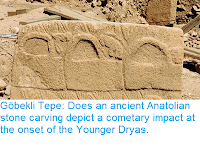Comet C/2017 T1 (Heinze) will make its closest approach to the Earth on Friday 5 January 2018 reaching a distance of 0.22 AU from the Earth
(0.22 times as far from us as the Sun, or 33 336 000 km). At this
distance the comet will not be naked eye visible, having a magnitude of 8.92, which means it should be observable with a good pair of binoculars, and then only in the Northern Hemisphere, as it is currently in the
constellation of Lynx, which cannot be seen from south of the Equator.
Image of C/2017 T1 (Heinze) taken on 12 October 2017 using the iTelescope T24 MPC U69 remotely operated telescope at the Sierra Remote Observatory in California. Image
is a composite made of six 60 second exposure. The asteroid is indicated by the arrow.The line passing across the image slightly bellow the comet is a satellite. iTelescope/Marian Urbanic/Fotografický občasník.
C/2017 T1 (Heinze) was discovered on 2 October 2017 by Aren Heinze of the University of Hawaii using the ATLAS 0.5-m f/2 Schmidttelescope at Mauna Loa as part of the Asteroid Terrestrial-impact Last Alert System (ATLAS) search program.
The name C/2017 T1 (Heinze) implies that it is a non-periodic comet
(C/) (all comets are, strictly speaking, periodic since they all orbit
the Sun, but those with periods longer than 200 years are considered to
be non-periodic), that it was the first comet (comet 1) discovered in
the first half of October 2017 (period 2017 T) and that it was
discovered by the Aren Heinze.
The orbit and current position of Comet C/2017 T1 (Heinze). The Sky Live 3D Solar System Simulator.
C/2017 T1 (Heinze) has an unknown orbital period and a
highly eccentric
orbit tilted at an angle of 96.8° to the plain of the Solar System, that
brings it to 0.58 AU from the Sun at perihelion (58% of the distance
between the Earth and the Sun, inside the orbit of Venus); with its aphelion (distance form the Sun at the furthest point in its orbit) being unknown.
See also...
Follow Sciency Thoughts on Facebook.








